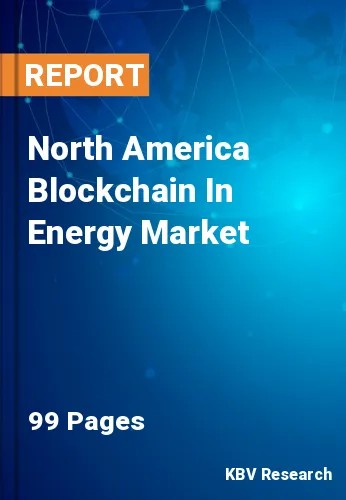The North America Blockchain In Energy Market would witness market growth of 74.3% CAGR during the forecast period (2023-2030).
Energy assets, such as power plants or renewable projects, can be tokenized on a blockchain, representing ownership or access rights. These digital tokens can be traded on blockchain-based platforms. Increases liquidity in traditionally illiquid energy, enables fractional ownership, attracts new forms of investment, and broadens access to energy assets for a diverse range of investors. Blockchain is used to create transparent and immutable records of carbon credits, facilitating efficient and trustworthy trading in the carbon industry. Streamlines the carbon credit, enhances transparency in emissions reduction efforts, and provides a reliable mechanism for verifying and trading carbon credits. Blockchain enhances the security of energy grids by providing a decentralized and tamper-proof system for authentication and cybersecurity. It reduces the risk of cyber-attacks on critical infrastructure. It improves overall grid security, protects against unauthorized access, and ensures the integrity of critical data and communication within the energy ecosystem.
Integrating blockchain with the Internet of Things and Artificial Intelligence (AI) is a growing trend. This convergence enables real-time data monitoring, analysis, and decision-making in energy systems. It improves grid management, enhances predictive maintenance capabilities, and optimizes dynamic energy through advanced analytics. The principles of decentralized finance (DeFi) are being applied to energy industry, enabling new financial instruments, tokenized assets, and decentralized energy finance platforms. Expands financial opportunities, allows for decentralized fundraising for energy projects, and introduces innovative financial models in the energy sector.
In Mexico, consumers with renewable energy sources like solar panels can directly trade excess energy with their neighbours using smart contracts. As Mexico strives to reduce its carbon footprint, blockchain applications provide a transparent and immutable record of carbon reduction initiatives. This contributes to the country’s commitment to sustainability and environmental stewardship. Educational initiatives and innovation hubs focused on blockchain applications in renewable energy are emerging in Mexico. These initiatives contribute to knowledge sharing and skill development, fostering a collaborative environment that accelerates blockchain adoption and implementation in Mexico's renewable energy sector. Hence, the factors mentioned above will drive the regional market growth.
The US market dominated the North America Blockchain In Energy Market, By Country in 2022, and would continue to be a dominant market till 2030; thereby, achieving a market value of $11,844.1 million by 2030. The Canada market is registering a CAGR of 78.2% during (2023 - 2030). Additionally, The Mexico market would showcase a CAGR of 76.7% during (2023 - 2030).
Free Valuable Insights: The Blockchain In Energy Market is Predict to reach USD 58.8 Billion by 2030, at a CAGR of 75%
Based on Component, the market is segmented into Services, and Platform. Based on Type, the market is segmented into Public, and Private. Based on End-use, the market is segmented into Power, Oil & Gas. Based on Application, the market is segmented into Peer-To-Peer Transaction, Grid Transactions, Energy Financing, Sustainability Attribution, and Others. Based on countries, the market is segmented into U.S., Mexico, Canada, and Rest of North America.
By Component
By Type
By End-use
By Application
By Country
Our team of dedicated experts can provide you with attractive expansion opportunities for your business.

